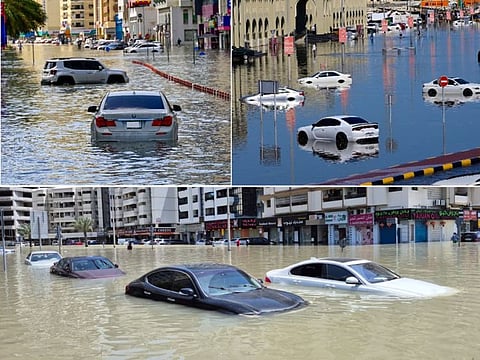Expert tips: What to do, and not do, with your car after a flood
Know the key post-flood car care tips from experts

Water damage from driving through flooded streets can wreak havoc on our vehicles. The situation worsens if the vehicle is stalled, and becomes fully submerged. For owners, this often translates to significant repair costs.
However, there’s hope. By following these straightforward tips from experts on salvaging and managing flood-damaged cars, you can mitigate substantial losses.
Here are some pointers from the San Antonio California Fire Department and Carmudi, an online automotive marketplace.
Here are some post-flood car care tips:
#1. Make sure you’re safe
Only approach your vehicle once floodwaters have receded and it’s safe. If needed, have it towed to higher ground.
#2. Don’t start the car
This is very IMPORTANT: Refrain from attempting to start it, which could exacerbate engine damage, if waterlogged.Water can short-circuit your electrical systems. It might enter your engine and other critical components which may cause more extensive damage. If water has made it into the engine, starting your car will cause even more damage.
#3. Unclamp the battery
Disconnecting the battery eliminates the possibility of a short-circuit while ensuring you don’t get electrocuted as you check your car.
#4. Open your windows
If possible, roll down your windows to get rid of any dank smell. If the windows are electric, open the doors, take out any removable mat, carpeting, and seat cover. Let the interior dry out.
#5. Check the level of immersion
The water will leave a mark indicating how deep your car was flooded. If the water level reaches the top of your tires, don’t try to start it and have the car towed instead.
#6. Check your fluid reservoirs
Inspect the quality of the fluids in your brake, clutch, coolant, and power steering reservoirs. Are the fluids still viscous to the touch, or have they become watery? If it’s the latter, then water has seeped in.
#7. Check the air filter
Your air filter is a good indication if the water found its way into your engine. If the air filter is wet, then the engine needs to be flushed, and have your car towed to an automotive service center for this service.
#8. Use a vacuum cleaner
Use a wet/dry vacuum to remove standing water. Soak up any remaining moisture with towels, focusing on seats and cushions. If possible, utilize dehumidifiers and fans to aid in the drying process.
With all these simple steps, you will initially check and know your auto’s condition, but just to make sure and be safe, it would be wise to bring your car to a repair shop for a thorough check-up.
It’s really devastating to see how inclement weather can damage property in just a snap. If your car is flooded, and your know it, that means you’re still alive, and that’s something to be thankful for. And then we can pick ourselves and start anew.
A note on insurance
It’s good to communicate with your insurer, and get your documents ready. Drivers are entitled to file insurance claims for both cars and bikes. However, it’s essential to recognise that insurance coverage may be subject to specific conditions.
For instance, if a car was parked in a lot and subsequently flooded due to heavy rains, and the owner then towed it to a garage for repairs, the maintenance expenses would likely be covered by insurance. Conversely, insurers may reject claims if the vehicle was parked in a waterlogged or partially submerged area, and attempts were made to start the engine resulting in damage.
And though certain flood-damaged vehicles might be recoverable, severe damage may prompt insurers to classify them as “totalled”. Receiving a rebuilt title after repairs enables the vehicle to meet roadworthy standards.
Sign up for the Daily Briefing
Get the latest news and updates straight to your inbox



